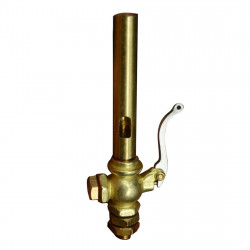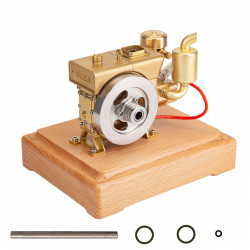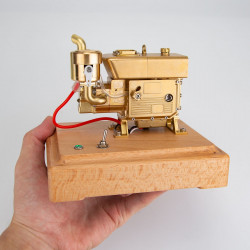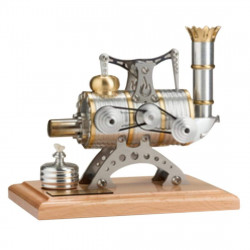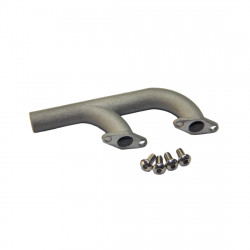
What is the History of the Harley Evolution V-twin Engine
What is the Harley-Davidson Evolution V-twin Engine?
The most "innovative" Harley-Davidson engine since the Flathead is the Evolution engine, sometimes referred to as EVO. In 1984, the Evolution engine, sometimes known as the "Blockhead" engine, made its debut on a Harley-Davidson motorcycle. The Evolution engine, which was built on the storied Shovelhead and Ironhead engines, pushed displacement limits while preserving the horsepower, dependability, and durability that made Harley-Davidson a household name. The 28-year Ironhead engine production cycle came to an end with the Evolution powertrain, which came in 883cc and 1100cc capacities.
What is the history of the Harley-Davidson Evolution V-twin Engine?
A pivotal moment in Harley-Davidson's history occurred in 1981. The business had some respite after ownership changes and pushing for auto import limits, but it still required significant upgrades. Harley was then dependent on the outdated 1966 Shovelhead series engine, which led to expensive warranty expenses and the need to create a new engine.
Being proactive, Harley's new owners kept the classic 45-degree cylinder angle design while making many improvements. These involved revamping combustion chambers, pistons, connecting rods, lubrication systems, and electronic ignition, in addition to moving the cylinder block from cast iron to aluminium alloy. The new Evolution series engine was finally released in 1984. The 1340cc Evolution engine was introduced by Harley-Davidson and fitted to five models, including the new Softail. The Evolution engine, which took seven years to develop, offered stronger oil seals, increased power at all speeds, and superior cleanliness and heat dissipation. The engine became lighter, smoother, and produced less heat, and horsepower and torque rose by 10% and 15%, respectively. Most notably, there were notable gains in reliability. The Evolution engine was used until 1998, and this signalled Harley's comeback.
For Harley-Davidson, the 1340cc all-aluminium engine marked a significant improvement in both design and dependability. Industry insiders view the Evo as the company's saviour after it broke away from AMF Group control. It fixed many of the Shovelhead's problems, increasing power generation, fuel efficiency, noise and vibration reduction, and reliability. Cooler operation and nearly zero oil leaks were made possible by innovations like compression combustion chambers, flat-topped pistons, stronger connecting rods and valve trains, a revised oil system, and a computerized ignition system. The blocky, pure-aluminium rocker covers and all-aluminium structure of the Evo engine give it a unique visual appeal.
What is the difference between the Harley-Davidson Shovelhead V-twin Engine and the Evolution Engine?
The Evolution engine's use of aluminium alloy for the cylinder heads, top, and cylinder block, which significantly improves weight and heat dissipation, is the most apparent visual difference as compared to the Shovelhead. The Evo's internal production processes are computerized, which leads to more accurate valves and a mix of aluminium alloy and cast iron cylinders. In order to minimize friction and heat expansion while in use, Harley-Davidson also produced aluminium alloy pistons with a 12% silicon content, during this time, a CV (constant vacuum) carburettor was also developed as an engine technology.
The Evolution engine used an all-aluminium alloy design to solve heat dissipation and associated problems. Notably, computerization was essential to increasing accuracy. The Evolution engine, which had a displacement of 1340cc, performed noticeably better than its predecessor, providing more power at all speeds and significantly improving sealing and heat resistance. In terms of Harley-Davidson engine design, it marked a turning point.
The RETROL Evolution R33 V-twin 4.2CC OHV Four-stroke Motorcycle Gasoline Engine Model is a replica of the Harley-Davidson Evolution V-twin engine created by the Retrol engine team. Although this model has several improvements over its predecessor, it still has the iconic exhaust pipe of the Retrol V-twin engine variant. For a genuinely revolutionary experience, the crankcase, air filter, mid-cylinders, and cylinder heads have all been updated.
